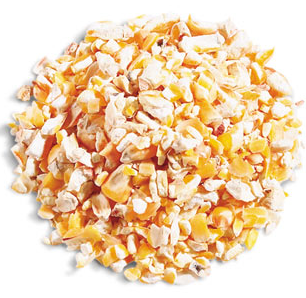Is It Ok to Feed Wholecorn to Pigs
 Corn is included in cattle diets to increase the energy concentration of the diet. Nutritionally, starch is the most important component of corn. Mechanical processing of corn is often used to increase the extent of starch digestion in the rumen. Corn can be fed whole with excellent results, but cracking or rolling it will increase digestibility by 5-10%.
Corn is included in cattle diets to increase the energy concentration of the diet. Nutritionally, starch is the most important component of corn. Mechanical processing of corn is often used to increase the extent of starch digestion in the rumen. Corn can be fed whole with excellent results, but cracking or rolling it will increase digestibility by 5-10%.
Although this improvement in digestibility can be important, it may not be enough to pay for the cost of processing the grain. Also, the improvement in digestibility may not be seen equally across the different life stages, which may make processing an unnecessary expense.
Processing corn will not typically improve average daily gain (ADG), but it will improve feed efficiency. In most cases, cattle fed processed grains usually have similar energy intakes and ADG while consuming less feed. This reduction in intake could be due to excessive rates of acid production in the rumen and subclinical acidosis.
Most experiments report that starch digestibility is greater for processed corn, compared to whole corn diets, have been conducted with yearling animals; in contrast, feedlot performance trials with weanling steers usually have failed to prove advantages for processing corn. In Table 1, Owens et al reviewed 164 feeding trials using processed and unprocessed corn. Feed conversion was improved by leaving the corn whole over dry rolling. The difference may be due to extent of chewing. Chewing capacity is much greater for younger cattle (weanlings) than older cattle. Digestibility of whole corn is increased by extensive chewing of the diet because the cuticle will be disrupted and this allows ruminal bacteria access to the corn starch for fermentation (McAllister et al., 1994).

Amaferm can also improve digestibility of whole shell corn. A feedlot study using 168 finisher cattle found that cattle supplemented with Amaferm® had an improvement in gain:feed ratio of 7.2%. The cattle didn't increase intake, but they gained more (Zerby et al., 2011).
Advantages of feeding whole corn are:
- – Eliminates the cost of grinding or rolling ($10-$20/ton)
- – Eliminates shrink from grinding/rolling (2-5%)
- – Reduces the risk of bloat and acidosis compared to ground corn
- – Reduces handling and additional storage costs with processed grains
Recommendations for feeding whole corn:
- – Do not limit feed a whole corn ration. Cattle should not be without feed for more than one hour at a time. Cattle tend to eat rapidly when fed and more grain is swallowed whole
- – Ensure adequate bunk space so cattle can chew uninterrupted
- – Feed clean, whole corn. Fines will increase incidence of bloat and acidosis.
- – Clean bunk daily
- – Pellet all ingredients except the whole corn and hay to decrease fines and keep an even mix
- – Feed limited hay (less than 10%)
- – Have access to clean water
Although, whole corn can be used successfully in many situations, it will not always be the best fit. The following are some guidelines for using whole corn:
When to use whole corn diets:
- – Young calf diets
- – Creep feeds
- – Self fed diets – finishing no forage
- – High forage diets: high rate of digestion of starch may adversely affect fiber digestion
- – When acidosis is an issue
When NOT to use whole corn diets:
- – Finishing rations for yearlings
- – Dairy rations or other diets with high rate of passage
If you have nutrition questions or would like one of our nutritionists to take a look at your ration email champ@biozymeinc.com.
References:
Lardy, Greg. 2013. Feeding Corn to Beef Cattle. NDSU Extension AS 1238. http://www.ag.ndsu.edu/pubs/ansci/beef/as1238.pdf
Loerch, S. and M. Gorocica-Buenfil. Advantages and Disadvantages of Feeding Whole Shell Corn. http://beefextension.com/proceedings/cattle_grains06/06-10.pdf
Tarr, Brian. 2003. Finishing Cattle on Whole Corn.
Zerby et al., 2011. Effects of diet and Aspergillus oryzae extract or Sacchromyces cerivisae on growth and carcass characteristics of lambs and steers fed to meet requirements of natural markets. Journal of Animal Science 89:2257
Source: https://surechamp.com/should-i-feed-whole-or-cracked-corn-in-my-show-ration/
0 Response to "Is It Ok to Feed Wholecorn to Pigs"
Publicar un comentario